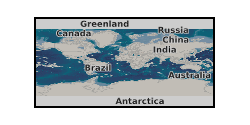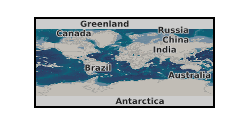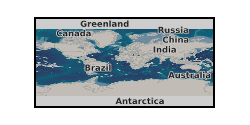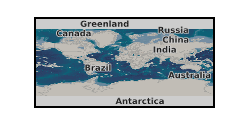Fracture analysis
Type of resources
Topics
Keywords
Contact for the resource
Provided by
Years
Formats
Representation types
Update frequencies
Scale
-

The permeability of single fractures, pairs of conjugate fracture pairs, and 256 fracture networks, is numerically computed using a multi-scale permeability method. For fracture networks, the geometries of the files are contained in 3dm files. The results are presented in a series of json text files. The method to compute permeabilities is described in the PhD thesis entitled "Multi-scale modelling of thermohydro-mechanical-chemical processes in fractured rocks" by Philipp Lang, Imperial College London, supervised by Adriana Paluszny and Robert W. Zimmerman.
-

Data supporting 'Effective permeability tensors of three-dimensional numerically grown geomechanical discrete fracture networks with evolving geometry and mechanical apertures', submitted to the Journal of Geophysical Research: Solid Earth. Authors: Robin N Thomas (corresponding, robin.thomas11@imperial.ac.uk), Adriana Paluszny, Robert W Zimmerman. Department of Earth Science and Engineering, Imperial College London. Contents: For each GDFN, the geometry at each growth step. Additionally, for GDFN E, the data shown in the paper (aperture and flow distributions, figures 6 and 7) are provided, including the displacement for the mechanical case, and pressure distributions which were not shown in the manuscript. For the two SDFN sets, the geometry of the four datasets shown in figures 4 and 5 are provided. Notes: - The geometry files are provided in the .3dm format, Rhinocerous' native format (https://www.rhino3d.com/). A free trial of Rhinocerous can be used to explore the files, and can convert them to a range of other CAD file types. - VTK files can be viewed using free software such as Paraview (https://www.paraview.org/). These contain the meshes. - Fracture surface areas reported in the paper are derived from the mesh, rather than the geometry. The mesh approximates the geometry leading to a different surface area than those measured in the geometry (3dm) files. - The SDFN datasets are shown before trimming the parts of fractures which are outside the domain. These parts are trimmed when they are imported to ICGT.
-

NERC grant NE/R013535/1. Here we present the dataset collected during a brine-CO2 flow-through test using a synthetic sandstone with oblique fractures, performed under realistic reservoir conditions stress. We monitored geophysical, mechanical and transport properties, for drainage and imbibition conditions, representative of the injection and post-injection stages of the CO2 storage process. We collected ultrasonic P- and S-wave velocities and their respective attenuation factors, axial and radial strains, electrical resistivity, pore pressure, temperature and brine and CO2 partial flows (from which relative permeability was later calculated).
-

These data consist of spatial and temporal datasets for 11 different small-scale laboratory experiments of fluid-driven fractures, described in the paper Up, down, and round again: the circulating flow dynamics of flux-driven fractures (Chalk and Kavanagh, accepted in Physics of Fluids, February 2024). These experiments, conducted at the University of Liverpool, are analogue models of natural fluid-driven fractures in glacial and magmatic settings. Fractures were created by injecting water or silicone oil into transparent gelatine at a constant rate. The total experimental data set consists of 11 different experiments named: S1,S2,S3,S4,S5,W1,W2,W3,W4,SH,WH. S experiments involve the injection of silicone oil, and W experiments involve the injection of water. The raw data consist of a temporal series of jpegs from camera recordings of each experiment, located in the subdirectory "frames". For all experiments except for WH and SH, the data also consist of a temporal series of csv files containing spatial velocity data of the internal fluid flow, located in the subdirectory "PIV". These data are described in further detail in the metadata file in the raw data directory.
-

UKGEOS and Core Sample Analysis. Geomechanical testing was performed to determine triaxial compressional strength, tensile strength, frictional strength and permeability of sandstones, siltstones, mudstones and coals from eleven depth intervals within the GGC01 borehole, UK Geoenergy Observatories (UKGEOS), Glasgow, United Kingdom. Frictional strength tests were also performed on cuttings samples of sandstones, siltstones, mudstones and coals from the GGA08 borehole, Glasgow, United Kingdom. In total twenty-three tensile strength tests were performed on ten sampled intervals, and seven porosity measurements pre-and post-failure were taken. Nine triaxial compressive strength tests and twenty-one frictional strength tests were performed, with permeability measured both before and after failure or shear respectively. From compressive strength tests we also determined the Young’s modulus and Poisson’s ratio. Results of X-Ray Diffraction are also included in the dataset.
 NERC Data Catalogue Service
NERC Data Catalogue Service